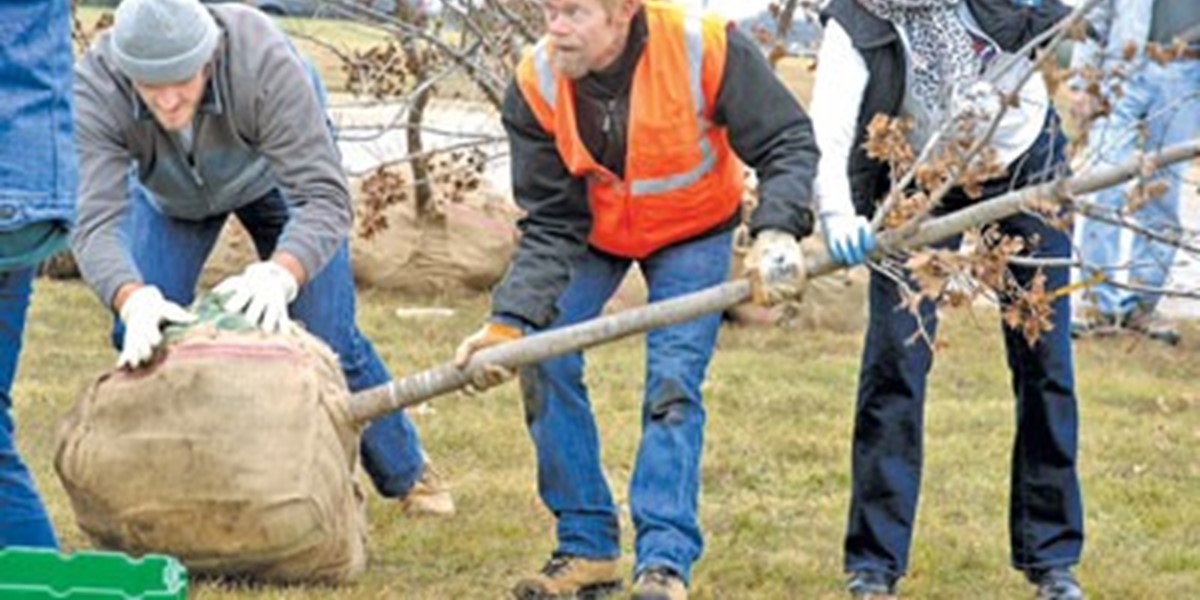Jefferson Median Gets Greener: 18 Trees Planted for Beautification Effort


Published December 18, 2009 By GEORGIA FISHER of People Newspapers
Something new has taken root at Jefferson Boulevard and Hampton Road.
Last weekend, volunteers threw muscle and heart into Phase 1 of a beautification project there, planting 18 trees on the intersection’s median — a sprawling, once bare expanse of grass that organizer Van Johnson hopes will become a walking trail and point of pride for the residents of Oak Cliff.
“The main goal is to get a lot of fall foliage,” said Johnson, who joined about 30 helpers Saturday morning, hefting small burr oaks and Caddo maples into holes augured the day before.
“The burr oak is a large shade tree, so that’s your majestic [element],” said city forester Karen Woodard, bundled up and grinning in the drizzle. “And the Caddo maple, that’s your ‘woo-woo.’ That’s your color.”
Dubbed the Jefferson Median Beautification Project, the initiative is about three years in the making and will eventually include native shrubs and grasses to compliment a tree line the length of the median.
Johnson said he plans to extend the project past Westmoreland Road to the west, all the way to the Cockrell Hill city limits, and he envisions it someday feeding into biking and walking areas to the east that will merge with the completion of the Margaret Hunt Hill Bridge over the Trinity River.

“The goal is to get a lane on Jefferson dedicated to bikes and pedestrians,” he said. “And we want this to be a natural area, a habitat for butterflies, for hummingbirds.”
The trees will allow residents to enjoy cleaner air, water, and soil, said Steve Houser, an arborist who chairs the city’s Urban Forest Advisory Committee. “But there’s a lot more to it than that,” he said. “It’s a quality-of-life issue, and it helps our economic engine too.”
The saplings at Hampton and Jefferson were purchased through a mitigation fund developers pay into when they destroy protected trees throughout the city. Acquiring them wasn’t so much of a problem, Houser said. Maintenance may be a different story.
“We have the money for the trees,” he said. “We just need more citizens’ momentum. A few hours out of somebody’s weekend — that’s the easy part.”
The early December planting was ideal, Woodard said, because the wet, cold weather will help young roots take hold before summer, when watering becomes crucial.
By then, scattered rain won’t be enough, she and Houser say, and water trucks or an irrigation system may be key.
For trees, “the first year is all about roots, and just being able to stand up,” Woodard said.
Oaks typically take about two decades to mature, she added, “but in the next 10 years, you’re going to see a lot of difference, if they get the water they need. They’ll grow a lot.”
On Saturday morning, the buzz was about finding more hands: a booster club, perhaps, or a well-meaning Eagle Scout; neighbors; civic groups — anyone willing to adopt the area and donate time to keeping it green and making it grow.
New federal funds could also help, said District 1 City Councilwoman Delia Jasso, who has promised her dedication to the project.
“When you ask for federal funds, you have to show a need,” Jasso said, nodding toward die-hards who crouched in freezing wind to steady a freshly planted tree on the west end of the median. “And look at all these volunteers here.”
